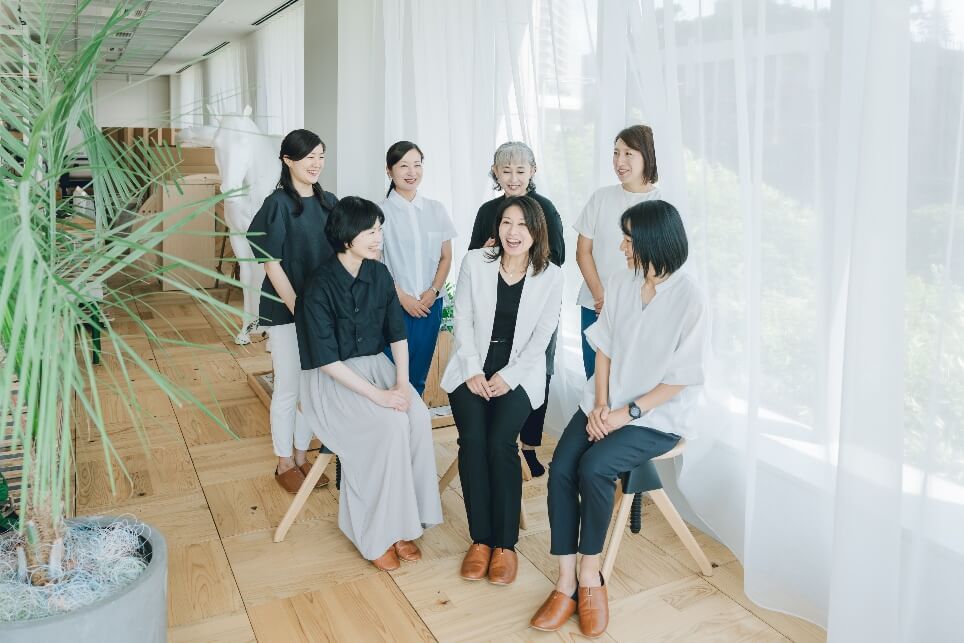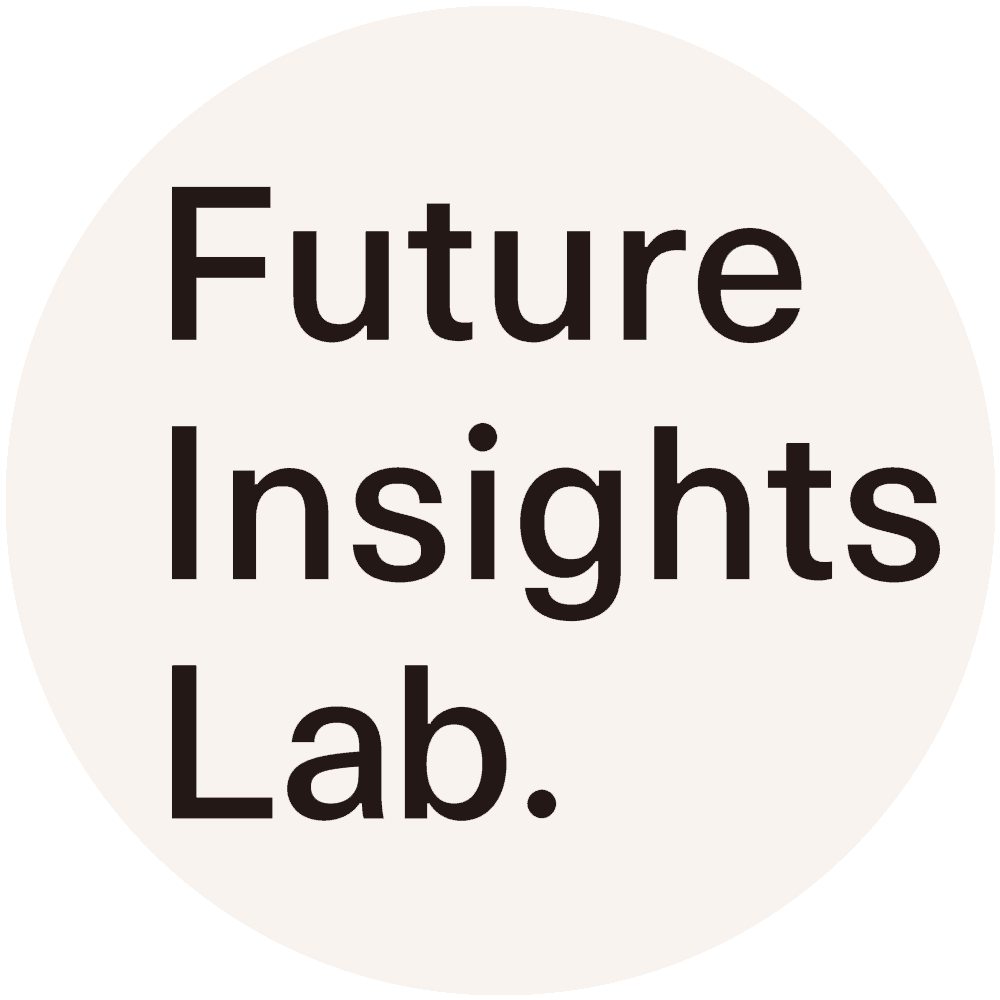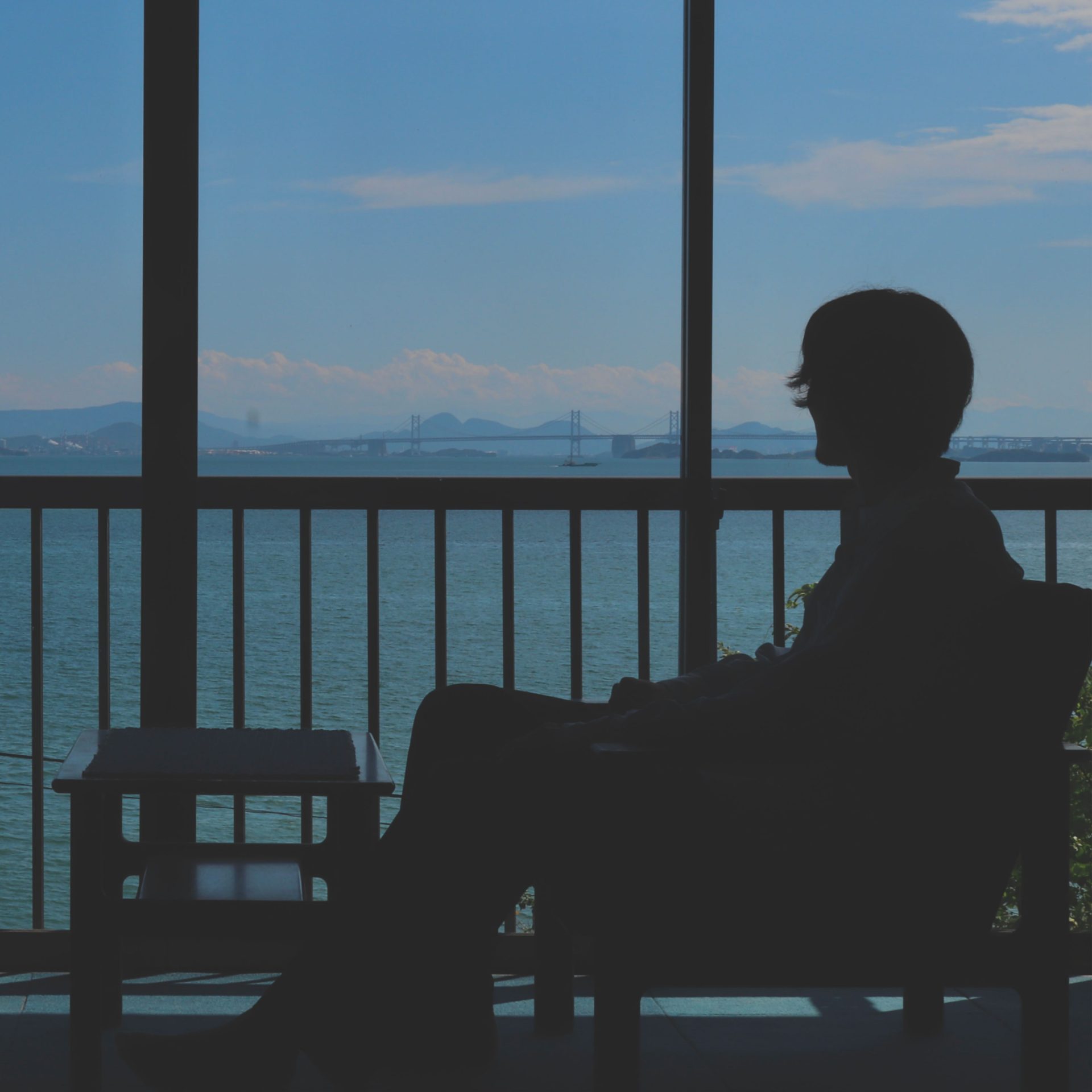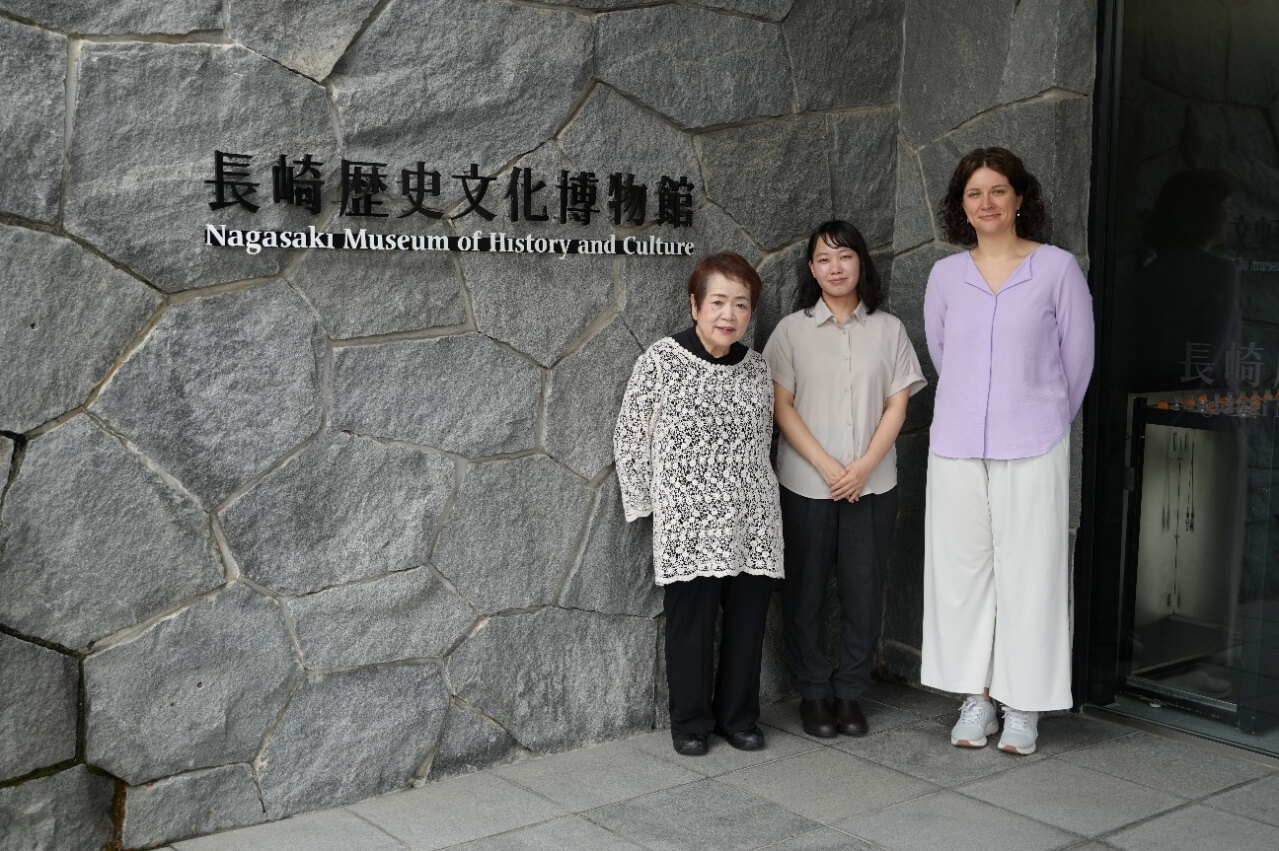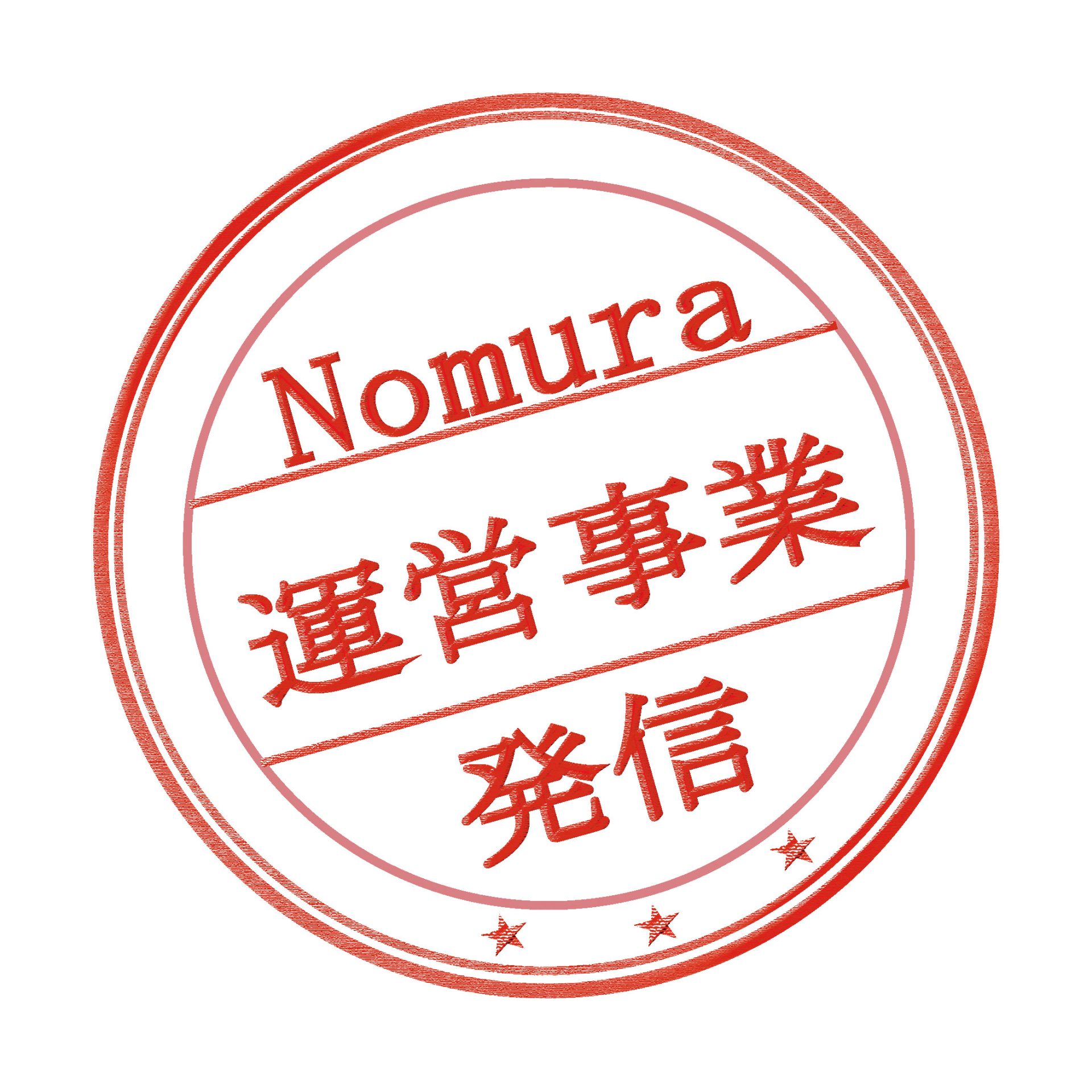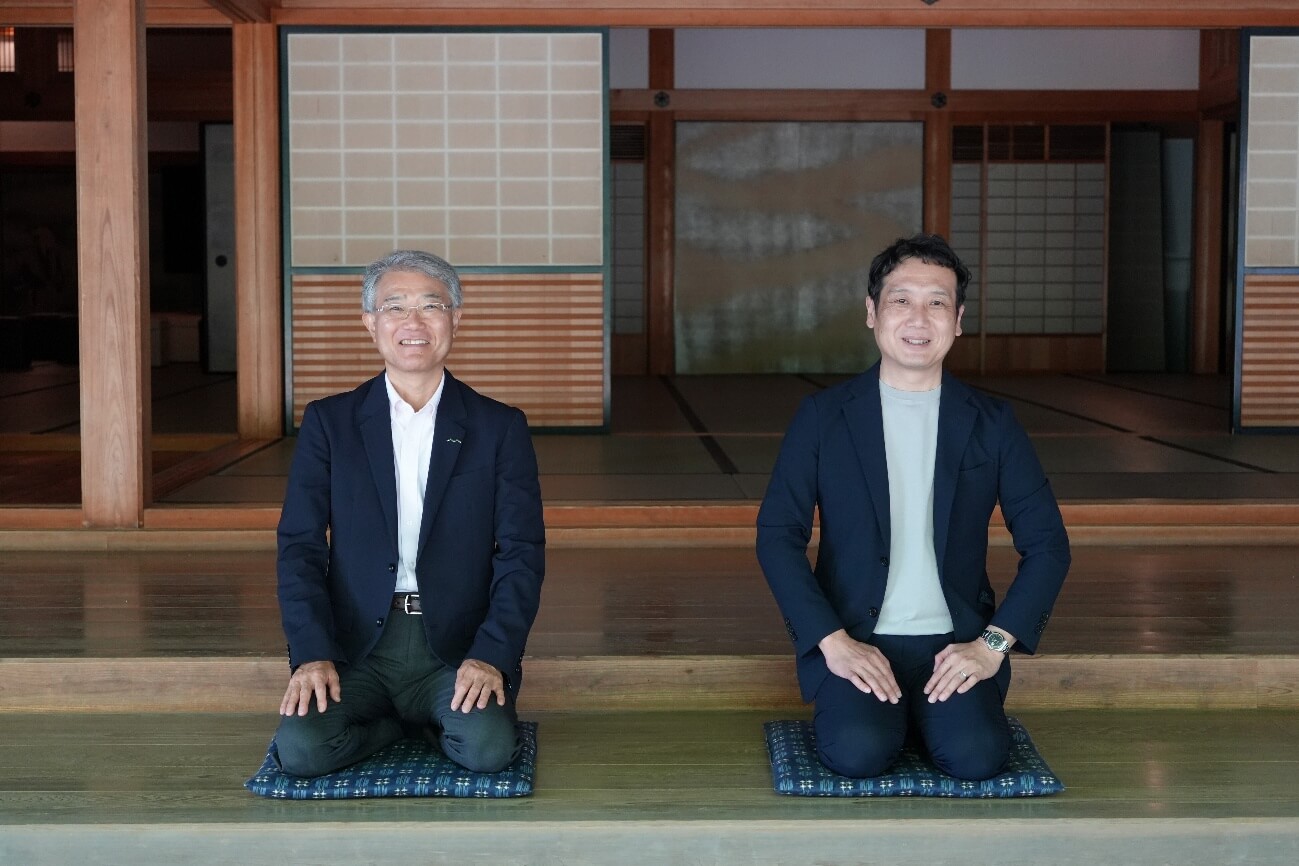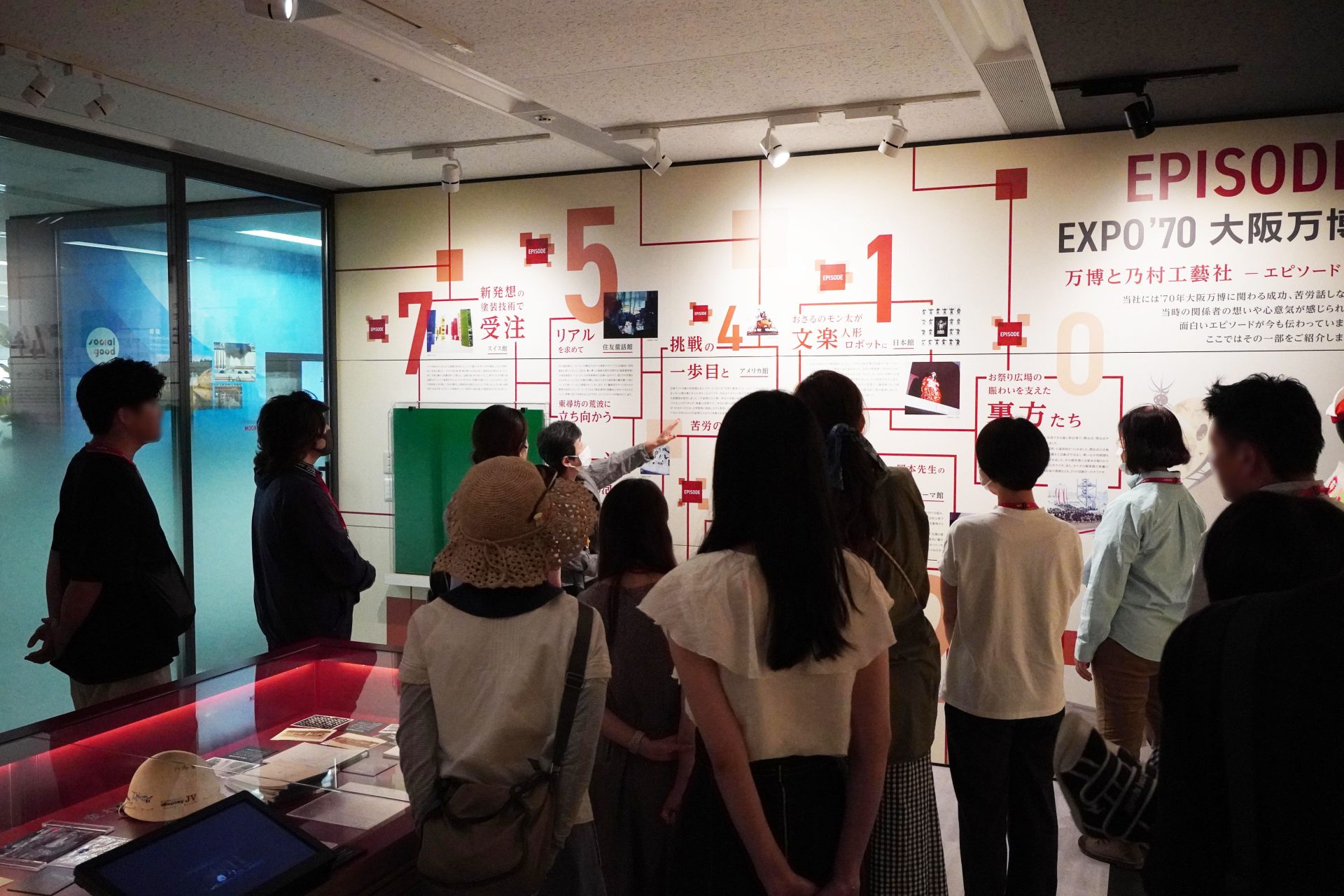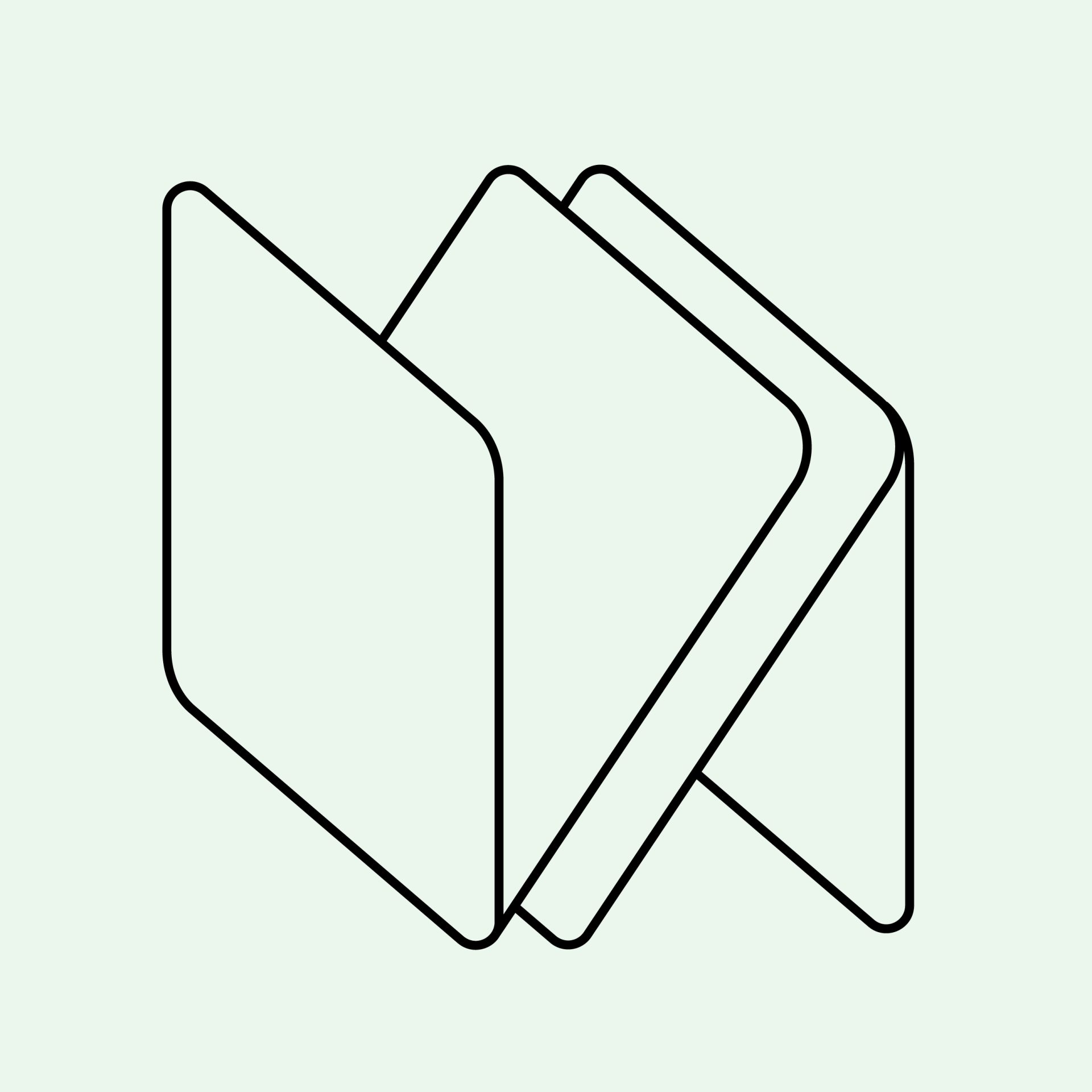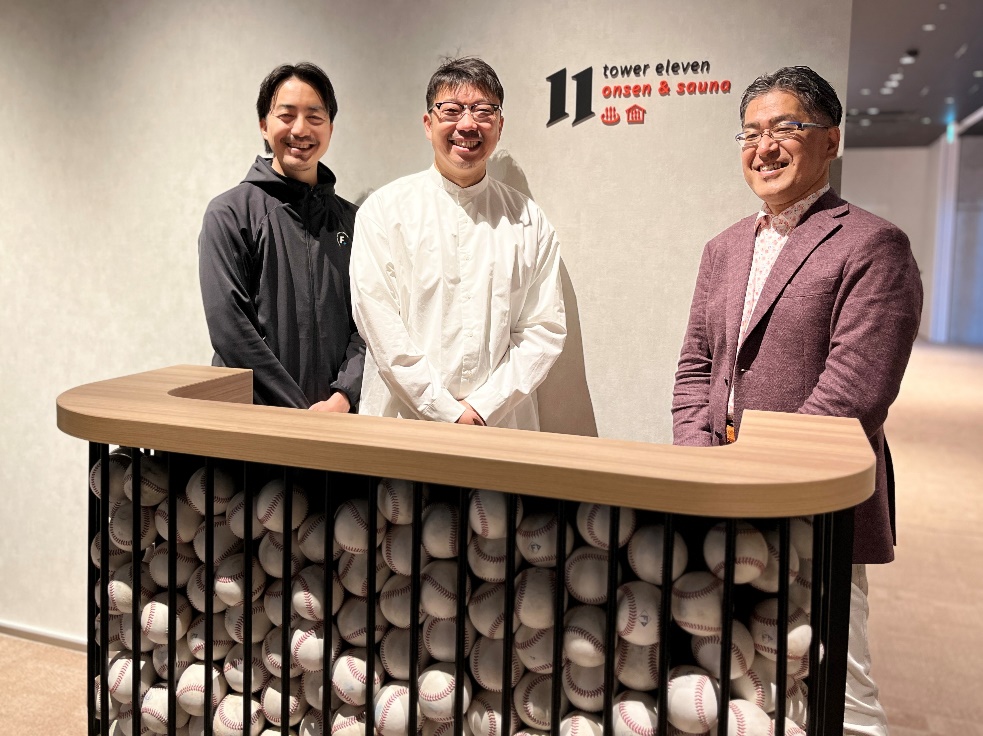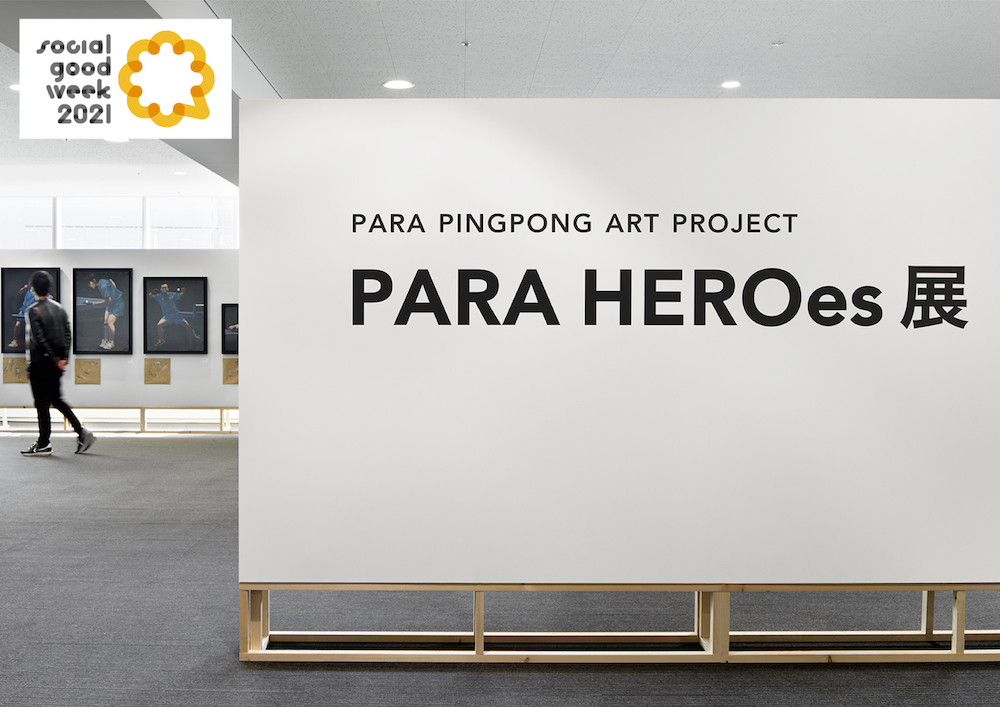
“Never give up on design” Possibility of creating spaces related to disabilities
2021/10/07- text and edit by
- nomlog editorial department
In the creation of spaces related to people with disabilities and welfare, it is not uncommon for functions to be prioritized and design to be left behind. In this session, Ryoji Tateishi, public relations officer of the Para Table Tennis Association, and Akane Yamaguchi NOMURA Co., Ltd., Ltd.'s creative division, who have explored the possibilities of design while facing disabilities and welfare, will introduce examples of design that leads to social good. We talked about the possibilities.
This article is a report article of the event "Social Good Week 2021" that introduces the "Social Good" projects of NOMURA GROUP.
* Click here for details on “Social Good”
NOMURA GROUP 's Social Good (Part 1 / Part 2)
* Click here for a list of report articles on “Social Good Week 2021”
PARA HEROes Exhibition & Taiyo Museum

Public Relations Director, Japan Table Tennis Association for the Physically Disabled (Para Table Tennis Association)
Ryoji Iota Tateishi
Former table tennis player, 7th in doubles at the All Japan Table Tennis Championships. Retired as a player to take over the family business. He has an older brother who was born with a disability and is a Japanese para table tennis player. He has served as coach of the Japanese national team at the Para World Table Tennis Championships, coach of the Japanese national team at the Rio Paralympics, and coach of the Japanese national team at the Asian Para Games. Currently, while working as a coach for his older brother, he is rebuilding the organization of the Para Table Tennis Association, launching a public relations department and focusing on sponsor sales, branding and marketing.

NOMURA Co., Ltd. Creative Division
Akane Yamaguchi
In 2001, he joined NOMURA Co., Ltd.. In the promotional spaces of various companies and corporate museums, he directs everything from planning to spatial design. Since 2015, he has participated in many projects related to the Olympics and Paralympics, and has been actively involved in projects that address social issues such as diversity and SDGs.
A place where everyone thinks about living together
Yamaguchi
I feel that design is neglected in the creation of spaces related to disabilities and welfare, and that commissioning a design is seen as an excessive investment. Today, I would like to talk with Ryoji Tateishi, Public Relations Officer of the Para Table Tennis Association, about the possibilities of spatial design in terms of disability and welfare, through the two cases I was involved in, the "TaiyoMuseum" and the "PARA HEROes Exhibition."

The first place I would like to introduce is the Taiyo Museum in Kamegawa, Beppu City, Oita Prefecture. This museum aims to convey the spirit of “No Charity, but a Chance!” advocated by Yutaka Nakamura, who is said to be the father of the Japanese Paralympic Games. Professor Nakamura served as team leader at the 1964 Paralympic Games in Tokyo. At the tournament, I saw with my own eyes the reality that all overseas players have jobs and go on trips with their families after a match, while Japanese players have no choice but to return to their facilities after a match. In 1965, he established Taiyo no Ie, a facility for disabled people to become independent. The “Taiyo Museum” will open in July 2020 as a museum that introduces the symbiotic society that has grown in Kamegawa, Beppu City, where the facility is located, while conveying the challenges of the “Taiyo no Ie” for over 50 years, and thinking about living together. Did.

The exterior of the Taiyo Museum, which opened in July 2020
The “Taiyo Museum” is a museum with the theme of disability, but rather than conveying the history of hardships, it is important to convey the challenge to a positive society. It is the wish of all people, regardless of whether they have a disability or not, to live in their own way. We created the space with the intention of being a place where everyone can think about living in their own way, a place that encourages people to think about a true symbiotic society, and take a step forward.

 Mr. Nakamura's words are used as corner signs
Mr. Nakamura's words are used as corner signs
 Chairs and exhibits created through workshops with sun house users
Chairs and exhibits created through workshops with sun house users
Art records the lives of para-athletes
Yamaguchi
From here, I would like to introduce Mr. Tateishi and the PARA HEROes exhibition.

standing stone
For the PARA HEROes exhibition, we decided to make para table tennis into art through collaboration with young artists who are going out into the world in order to raise awareness of para table tennis and get everyone interested in it. In sports games, no two plays are the same. That moment, that moment, is 100% an expression of yourself. I believe that sports are art of the moment. The same is true for parasports. Therefore, I came up with the theme of recording the footprints of para-athletes through art.

For the PARA HEROes exhibition, we collaborated with four artists. Hiromine Nakamura, a puppet artist and traditional Hakata doll maker; Tatsuya Tobishima, an oil painter; Takashi, female photographer Aya Matsui. We asked the four of us to come to the players' training camps, watch the games, and create works that actually felt something from para table tennis. The production process was also made into a documentary film and played as video art at the venue.

PARA PINGPONG ART PROJECT Puppeteer Hiromine Nakamura
"A single step can overcome any obstacle"
PARA PINGPONG ART PROJECT Painter Tatsuya Tobishima
"Every Moment Tells a Life Story"
PARA PINGPONG ART PROJECT Pianist Takashi Matsunaga
"I'm not bound by genre, so I can go anywhere."
standing stone
Since my older brother is disabled, I decided to take over the family business and quit playing table tennis. However, when I went abroad as a coach for my older brother, I saw a player who had no hands and was holding a racket in his mouth while playing table tennis. When I saw it, I felt that I didn't care about worrying about my incomplete combustion or inferiority complex. It's difficult to change people's minds, but I was instantly captivated by that para-athlete and changed my mind. I strongly felt that they had such a wonderful power, and I was convinced that it was my role to firmly convey this to the general public.
Yamaguchi
Actually, it was about a month before the opening of the PARA HEROes exhibition that I received a consultation about work, but I received a desperate phone call from Mr. Tateishi in the middle of the night, and I didn't have the time or budget, I immediately consulted with my boss and wondered how I could make it happen. As a result, although it was a trial case, we decided to support the design costs, and in exchange, put credits from NOMURA Co., Ltd.

We did everything from concept to design in 3 hours, but we didn't want to make excuses for lack of time and budget, so it turned out to be a project with a lot of content. Mr. Tateishi also wanted to include the concept of sustainability, so we set up a design concept called "UNCOATED." Just like an artist facing para table tennis as it is, the theme is that there is no coating, and through art works, you can face para table tennis without preconceptions.

From a sustainable point of view, we used 3x6 panels at the exhibition venue, but from the beginning we used only those modules and designed them on the premise that they will be reused. It has become a unique space with open feet. Also, in an exhibition like this, we try not to allow outside light to enter, but we intentionally let outside light enter. The natural light, which looks different depending on the weather, gave this space an expression.
Is design a luxury item? Or what do you need?
Yamaguchi
Through my work at the Taiyo Museum, I realized that I had a preconceived notion about people with disabilities. When I was thinking about creating a space related to people with disabilities, the first thing that came to my mind was pink or beige colors and rounded corners. At that time, I thought, "Oh?" and "What is this?" I myself was surprised that I had such a preconception about disabilities and welfare.
 The first image that came to my mind when I heard the words “disability” and “welfare”
The first image that came to my mind when I heard the words “disability” and “welfare”
I wondered if something designed to be gentle, soft, and non-irritating would be what users really wanted. Around this time, I started studying inclusive design*, and if I hadn't known about inclusive design, I might have proceeded with this image. If there had been a person with a disability close to me, I don't think I would have had this kind of prejudice. What do you think, Mr. Tateishi?
* Inclusive design = A design concept that actively includes users, who have been excluded from the main target of design, into the design process.
standing stone
I agree. Because of my parents' educational policies, I was never separated from others because of my disability. However, I was taught that disability is not a weakness or something to be cured, but rather a personality of disability. I grew up with a distinction between what I can do and what I can't do, so I don't have a negative image of disabilities.
Yamaguchi
I think that this prejudice stems from a feeling of compassion, and I unconsciously drew a line because of my strong belief that it was good.

standing stone
Their preconceived notions and considerations get in the way, and even the disabled people feel ashamed of their considerations. Even if you can do something on your own, you may find it difficult to understand each other because the other person thinks it is good for you and refuses to help you.
Yamaguchi
I also feel that preconceived notions get in the way and create a distance. One-sided beliefs draw a line in the world.
standing stone
The most important thing is knowing your opponent. I respect para table tennis players as athletes and it's amazing! That's what I think, so I'm moved to tears when I watch the game. By learning a little bit about the appeal of para table tennis, you will be able to feel something like I do, and I hope that you will be able to shorten the distance between people with disabilities and those without. In order to realize social good, I think it is important to get to know each other well.
Yamaguchi
Returning to space design here, there must be a comfortable space for people with or without disabilities, and people with disabilities must have a desire for a comfortable space, no different from us. However, due to prejudice, for example, I try to design like a welfare facility, even though no one has told me to do so.
I don't think the design needs an extra "likeness". Conversely, by changing the design, I think we can get rid of the preconceived notions we had before, and close the distance with people who were indifferent.
standing stone
My first branding project was to revamp the para table tennis website, and instead of posting pictures of people with disabilities, I posted cool pictures of myself as an athlete. At first glance, you don't have to know that this is a table tennis homepage for people with disabilities. Appearance is important in design, so I think it is very important to start with appearance.
Yamaguchi
Even if you're trying to convey something important, it's a waste if your first impression puts you at a distance. I believe that good design has the power to draw you closer.

In order not to give up on design
Yamaguchi
So far, I've been talking about the preconceptions of the design side, but what I felt in my work at the Taiyo Museum was that the House of the Sun also had preconceptions about design. I feel that the design was a luxury item.
To give you an anecdote, the logo for the Taiyo Museum was originally written in a normal typeface, with the condition that it could be typed in Word. Since the logo is the face of the facility, I decided that this was no good, so I designed a logo on my own and brought it in. When I show them a logo plan and ask them to give me their opinion on it, even if they don't understand the design, I get a lot of opinions. It's not that I don't have a desire for design, but I think there was a prejudice and prejudice that somehow suppressed it. In the end, it took a year and a half to decide on the current logo. Now, the people at the facility also take great care of this logo.

standing stone
I believe that spatial design has the power to attract people who are not interested in it by looking at it, and to put a deeper concept into their hearts. I really felt that at the PARA HEROes exhibition this time, and thought that design is really necessary and something that shouldn't be compromised.
Yamaguchi
You can change the consciousness of not only the visitors but also the people inside, so if you're going to make it anyway, it's better to stick to the design thoroughly! I would like to suggest
standing stone
As was the case with the PARA HEROes exhibition, even on the para table tennis website, the players hadn't sent out information themselves until then, but the moment the website became cool, everyone started tweeting on Twitter and Instagram. It's important how people who come from the outside look at it, but how the people inside feel about it is also a big factor in design.
Yamaguchi
Design can change people's preconceived notions and make them want to tell and invite others. That's why I hope you don't give up on design.

That said, NOMURA GROUP is often asked to work by companies that are interested in design, so there are few opportunities to meet people who are distant from design. There are so many companies and jobs out there, and I wonder if I can do something to prevent them from giving up on design. One is the form of design support that I was allowed to do at the PARA HEROes exhibition. Also, this is just my personal opinion, but since there are about 380 designers in NOMURA GROUP, I think it might be possible to create a system where each individual can give advice in the form of a partner designer for that company. . In order to prevent people from giving up on design, I think it will be social good to play the role of a refuge for design.
"What is a place where everyone thinks about living in their own way?" "How to change preconceived notions?" "How to not give up on design?" Because of Yamaguchi, it was a session filled with realizations and thoughts that were born. Encouraged by NOMURA Co., Ltd. Tateishi's words, "Spatial design has the power to involve people who are not interested in it visually and to put deeper concepts into their hearts." It was the starting point. (nomlog editorial department)
Text: Sho Iwasaki/Photo: Yui Yasuda (during the event)
【notice】
The second edition of the "PARA HEROes Exhibition" was held from August 17th to 29th, 2021. NOMURA GROUP continued to support the design work, and Akane Yamaguchi and Ryo Onishi were in charge of exhibition planning and venue design.
Like this article?

